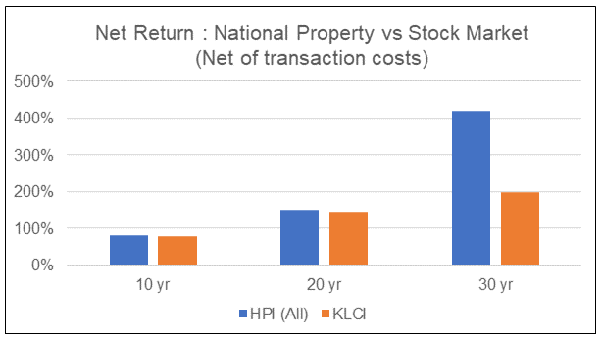
Jim Cramer’s bullish stockmarket predictions make it possible for many to make significant gains in stocks. This article will discuss the advantages of building a portfolio with cramer stocks. These stocks can also be accessed through a variety of investment options. Learn more. After all, Jim Cramer's bullish stock market predictions are worth your consideration. Here are some ways to make cramer stocks part of your portfolio:
Benefits of building your portfolio of cramer stocks
Jim Cramer is a famous CNBC host who has made a career of telling people which stocks to buy. Although it is true that trading should be avoided if there are high-risk investments, Cramer still recommends that people understand their goals and not trade. He once said that Bear Stearns was fine. However, it has fallen more than 80% since then.

According to a Wharton School study, Jim Cramer’s Action Alerts PLUS portfolio outperformed the S&P 500 Index in 17 years. The action alerts PLUS portfolio averaged 4% per year while the S&P 500 Index averaged just 7%. The difference in Jim Cramer's picks versus the average return of S&P 500 is only 3%. While a long/short ETF of the type of hedge fund would isolate Cramer's factor, it would probably not pop due to the offsetting positions.
Jim Cramer's bullish outlook for stocks
Cramer's optimistic outlook on stock market stocks may seem skeptical to some investors, but the numbers are clear. Cramer suggests many stock trader who have achieved success. For example, he has made money by buying stock in Occidental Petroleum and Chevron, two energy stocks. These stocks have been invested in by other big investors, such as Warren Buffett or Stanley Druckenmiller. Cramer is also an Apple fan, and he keeps the stock in a charitable trust.
Although Jim Cramer is loved by many, some investors are skeptical about his investment philosophy. Many investors accuse him of being too fickle with his bullish outlook, and they note that he frequently switches between bearish and bullish positions. Cramer's bullish outlook on the stock market has been criticized, since he has also had his fair share failures. Cramer's interview with Wachovia CEO was one example. Despite the price decline, Cramer defended the stock in an interview on his show.
Here are some ways to invest cramer stocks
In today's world, investing in cramer stocks can be a good idea, but how do you invest in these popular stock picks? Jim Cramer, a journalist and former hedge fund manager, is now a well-known investor. His social media followers are large and he has a gift for identifying high quality companies. There are many options to invest in his picks. Follow his YouTube and Twitter advice to get started.

Wharton examined Cramer’s picks, and found that his portfolio had been only 5% volatile than the S&P 500 index for the past decade. The authors of the study argued that Jim Cramer's picks matched the S&P through 2010, but have lagged behind since then. Cramer’s picks also only returned 5.0% annualized compared to 12.2% in the S&P 500.
FAQ
What are the benefits of stock ownership?
Stocks can be more volatile than bonds. If a company goes under, its shares' value will drop dramatically.
If a company grows, the share price will go up.
In order to raise capital, companies usually issue new shares. Investors can then purchase more shares of the company.
Companies can borrow money through debt finance. This gives them access to cheap credit, which enables them to grow faster.
Good products are more popular than bad ones. As demand increases, so does the price of the stock.
The stock price should increase as long the company produces the products people want.
Are bonds tradeable?
They are, indeed! They can be traded on the same exchanges as shares. They have been doing so for many decades.
The difference between them is the fact that you cannot buy a bonds directly from the issuer. They must be purchased through a broker.
This makes buying bonds easier because there are fewer intermediaries involved. This means that selling bonds is easier if someone is interested in buying them.
There are many kinds of bonds. There are many types of bonds. Some pay regular interest while others don't.
Some pay quarterly interest, while others pay annual interest. These differences allow bonds to be easily compared.
Bonds are great for investing. You would get 0.75% interest annually if you invested PS10,000 in savings. If you invested this same amount in a 10-year government bond, you would receive 12.5% interest per year.
If all of these investments were accumulated into a portfolio then the total return over ten year would be higher with the bond investment.
What are the advantages of investing through a mutual fund?
-
Low cost - Buying shares directly from a company can be expensive. A mutual fund can be cheaper than buying shares directly.
-
Diversification is a feature of most mutual funds that includes a variety securities. One security's value will decrease and others will go up.
-
Management by professionals - professional managers ensure that the fund is only investing in securities that meet its objectives.
-
Liquidity - mutual funds offer ready access to cash. You can withdraw money whenever you like.
-
Tax efficiency- Mutual funds can be tax efficient. As a result, you don't have to worry about capital gains or losses until you sell your shares.
-
Purchase and sale of shares come with no transaction charges or commissions.
-
Mutual funds are easy to use. All you need to start a mutual fund is a bank account.
-
Flexibility: You have the freedom to change your holdings at any time without additional charges.
-
Access to information – You can access the fund's activities and monitor its performance.
-
Ask questions and get answers from fund managers about investment advice.
-
Security - Know exactly what security you have.
-
Control - You can have full control over the investment decisions made by the fund.
-
Portfolio tracking allows you to track the performance of your portfolio over time.
-
You can withdraw your money easily from the fund.
Disadvantages of investing through mutual funds:
-
Limited selection - A mutual fund may not offer every investment opportunity.
-
High expense ratio – Brokerage fees, administrative charges and operating costs are just a few of the expenses you will pay for owning a portion of a mutual trust fund. These expenses will eat into your returns.
-
Lack of liquidity-Many mutual funds refuse to accept deposits. They must only be purchased in cash. This limits the amount of money you can invest.
-
Poor customer service - there is no single contact point for customers to complain about problems with a mutual fund. Instead, you must deal with the fund's salespeople, brokers, and administrators.
-
Risky - if the fund becomes insolvent, you could lose everything.
Statistics
- US resident who opens a new IBKR Pro individual or joint account receives a 0.25% rate reduction on margin loans. (nerdwallet.com)
- "If all of your money's in one stock, you could potentially lose 50% of it overnight," Moore says. (nerdwallet.com)
- Individuals with very limited financial experience are either terrified by horror stories of average investors losing 50% of their portfolio value or are beguiled by "hot tips" that bear the promise of huge rewards but seldom pay off. (investopedia.com)
- The S&P 500 has grown about 10.5% per year since its establishment in the 1920s. (investopedia.com)
External Links
How To
How do I invest in bonds
An investment fund, also known as a bond, is required to be purchased. Although the interest rates are very low, they will pay you back in regular installments. You make money over time by this method.
There are many options for investing in bonds.
-
Directly purchasing individual bonds
-
Buying shares of a bond fund.
-
Investing through an investment bank or broker
-
Investing via a financial institution
-
Investing through a Pension Plan
-
Invest directly with a stockbroker
-
Investing in a mutual-fund.
-
Investing through a unit trust.
-
Investing in a policy of life insurance
-
Investing via a private equity fund
-
Investing using an index-linked funds
-
Investing through a hedge fund.